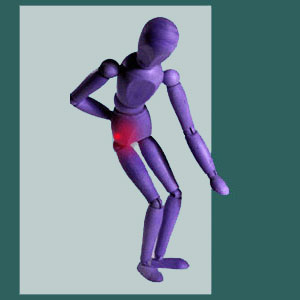
Do you know what causes sacroiliac flare-up? There are several reasons why pain might suddenly become acute and debilitating. You must know that regardless of the cause, severe sacroiliac pain is one of the worst lower body symptoms, since it can prevent patients from standing, walking, working and doing all the things that are necessary to enjoy normal lives.
Flare-ups are a common citation for SIJ pain conditions. Many patients report experiencing recurrent flare-ups, often leading to chronic symptomology. Since these episodes are very disruptive, the patient often suffers a variety of anatomical, psychological and socioeconomic consequences as a direct result of their sacroiliac pain attacks.
This dialog investigates the causes, symptoms and consequences of acute presentations of sacroiliac pain, known as flare-ups. Our hope is to help patients to recognize factors that they can influence in order to reduce the frequency and severity of flare-ups while searching for a true cure for their suffering.
Symptoms of Sacroiliac Flare-Up
Acute flare-ups can be an initial presentation of sacroiliac pain or can be recurring episodic events. Flare-ups describe times when the condition escalates in severity, often debilitating the patient until the worst of the symptoms resolve. There may or may not be known triggers for a flare-up, but most patients tend to believe that certain activities, postures or occurrences do play important roles in when they experience symptomatic attacks.
Most patients will suffer exacerbated pain in the joint itself, and may also present radiating symptoms into the buttocks, legs or lower back. Symptoms might be unilateral one one side only or may be bilateral. Some patients might not be able to stand or walk due to acute pain or because of instability in the joint.
Sources of SIJ Pain Flare-Ups
Any painful sacroiliac joint issue can create flare-ups due to known or idiopathic reasons. Virtually all pain syndromes, regardless of whether they are structurally-motivated, caused by disease, or are psychogenic, have factors that may seem to aggravate or relieve them. Exacerbating factors that can start an attack of pain are called triggers. Trigger mechanisms range from positional postures like sitting, standing and reclining to activity-related circumstances like running or walking. Other triggers might be psychoemotional in origin, including those developed for both primary and secondary gain motivations.
Some flare-ups occur idiopathically. There might be no preceding reason for the pain to increase, yet it escalates nevertheless. Patients are cautioned not to assume that preceding events are the true cause of pain without evidence of aggravated pathology. This is because some psychosomatic pain conditions invite programmed behaviors that can quickly disable the patient with a collection of assumed triggers for pain, all of which are actually innocent and incidental to the symptoms.
Collateral Consequences of a Sacroiliac Flare-Up
Flare-ups can have immediate and long-term effects on any patients:
In the short-term, the pain will prevent most patients from being physically active or productive in any meaningful capacity. Patients are likely to miss time at work or school and be forced to endure a sedentary lifestyle until they can feel well enough to move about without dire pain. Patients might not be able to attend to personal responsibilities or even adequately care for themselves. Short-term pain can lead to periods of excessive dependence of drug therapies, most of which are both dangerous and toxic.
Long-term consequences of recurrent episodic attacks of acute SIJ pain can contribute to a degradation of overall heath and wellness in both the physical and psychoemotional realms. Patients often adopt new patterns of life to minimize the occurrence of pain and this usually means becoming less active and relying more on risky symptomatic forms of treatment. The accumulated effects of pharmacological products can produce devastating consequences in the anatomy and can undermine the resources of the mind, as well. Patients might have to withdraw from school or may lose their jobs due to frequent absenteeism. Chronic SIJ pain is also a known cause of depression and is often cited as a major contributor to suicidal thoughts and actions.
Patients should be certain to carefully evaluate their flare-ups in order to separate causative from coincidental factors. They should always report the circumstances of these attacks to their physicians, but also take mental note of their relevance themselves. Patients must be proactive to insure proper and accurate diagnosis and should be wary of the common incidence of mindbody factors that instigate flare-ups. In many, many instances, the attacks are not the results of any physical movement or activity, but instead are simply the consequences of a primary gain pain syndrome seeking to reinforce psychoemotional repression utilizing the mechanism of acute ischemia.
Sacroiliac Joint Pain > Sacroiliac Pain > Sacroiliac Flare-Up





